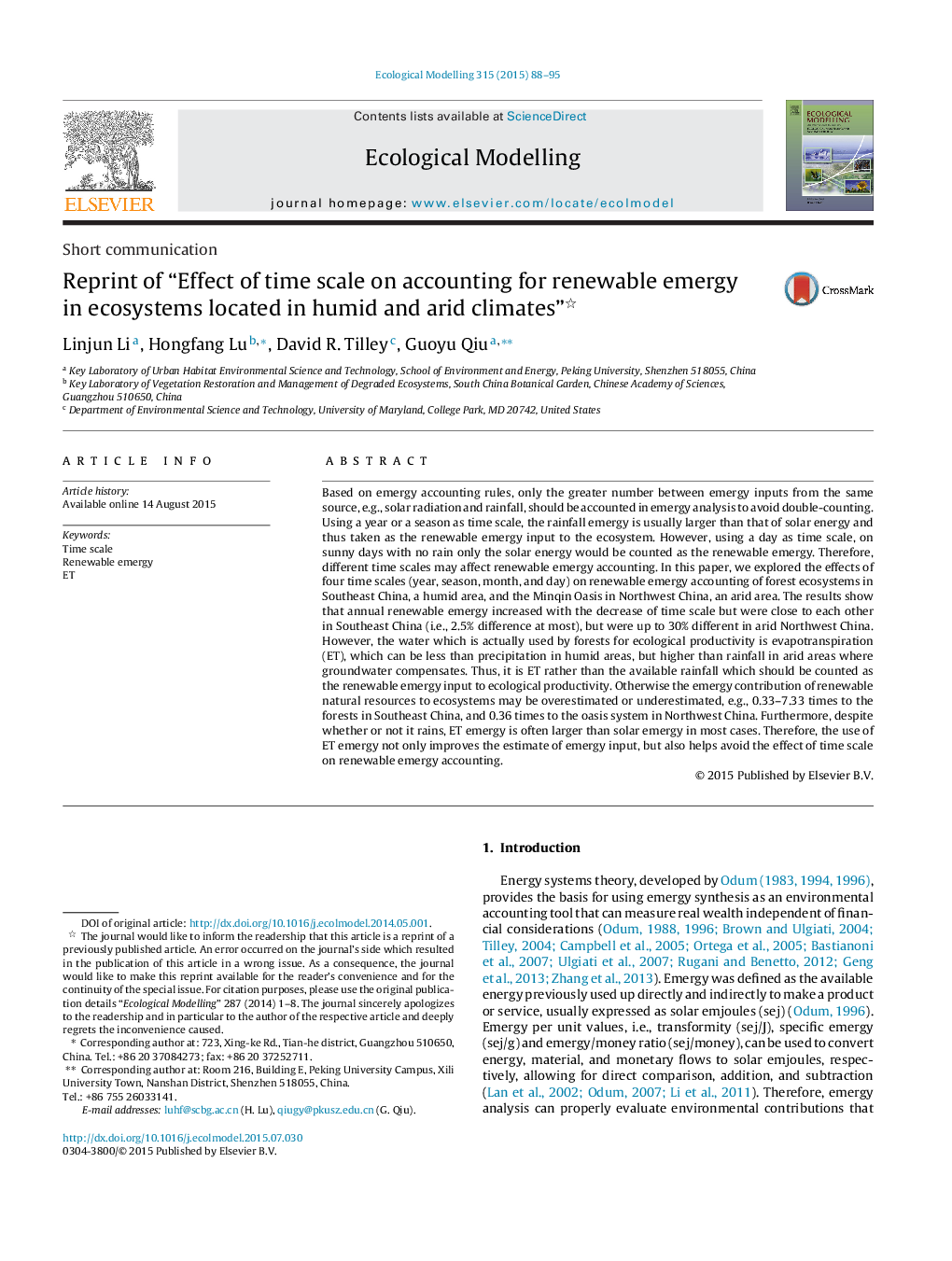| کد مقاله | کد نشریه | سال انتشار | مقاله انگلیسی | نسخه تمام متن |
|---|---|---|---|---|
| 4375650 | 1617432 | 2015 | 8 صفحه PDF | دانلود رایگان |
• Annual renewable emergy increased with the decrease of time scale.
• The effect of time scale is obvious in arid area, but not in wet area.
• Evapotranspiration is the exact measure of renewable emergy input.
• The use of evapotranspiration can avoid the effect of time scale.
Based on emergy accounting rules, only the greater number between emergy inputs from the same source, e.g., solar radiation and rainfall, should be accounted in emergy analysis to avoid double-counting. Using a year or a season as time scale, the rainfall emergy is usually larger than that of solar energy and thus taken as the renewable emergy input to the ecosystem. However, using a day as time scale, on sunny days with no rain only the solar energy would be counted as the renewable emergy. Therefore, different time scales may affect renewable emergy accounting. In this paper, we explored the effects of four time scales (year, season, month, and day) on renewable emergy accounting of forest ecosystems in Southeast China, a humid area, and the Minqin Oasis in Northwest China, an arid area. The results show that annual renewable emergy increased with the decrease of time scale but were close to each other in Southeast China (i.e., 2.5% difference at most), but were up to 30% different in arid Northwest China. However, the water which is actually used by forests for ecological productivity is evapotranspiration (ET), which can be less than precipitation in humid areas, but higher than rainfall in arid areas where groundwater compensates. Thus, it is ET rather than the available rainfall which should be counted as the renewable emergy input to ecological productivity. Otherwise the emergy contribution of renewable natural resources to ecosystems may be overestimated or underestimated, e.g., 0.33–7.33 times to the forests in Southeast China, and 0.36 times to the oasis system in Northwest China. Furthermore, despite whether or not it rains, ET emergy is often larger than solar emergy in most cases. Therefore, the use of ET emergy not only improves the estimate of emergy input, but also helps avoid the effect of time scale on renewable emergy accounting.
Journal: Ecological Modelling - Volume 315, 10 November 2015, Pages 88–95
